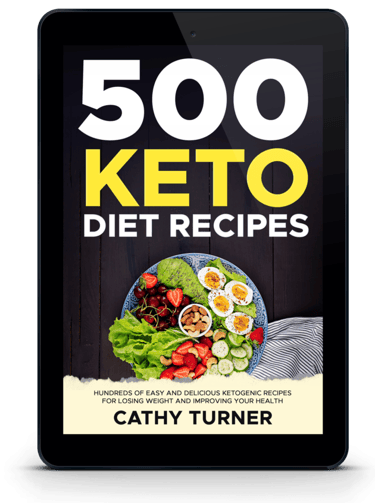The Ultimate 7-Day Keto Meal Plan for Beginners
Kickstart your keto journey with The Ultimate 7-Day Keto Meal Plan for Beginners! This easy-to-follow guide includes low-carb, high-fat meals, a complete shopping list, and simple recipes to help you burn fat and stay in ketosis.
DIET PLANBALANCED DIETHEALTHY DIET RECIPESKETO DIETWEIGHT LOSS
6/11/20256 min read
The ketogenic diet, commonly referred to as the keto diet, is a low carbohydrate, high fat dietary regimen designed to shift the body's metabolism from burning glucose for energy to utilizing fats in a state known as ketosis. This metabolic state occurs when carbohydrate intake is significantly reduced, leading to decreased insulin levels and increased fat breakdown. Consequently, the body begins to produce ketones, which serve as an alternative energy source derived from fats. One of the primary principles of the keto diet is to minimize carbohydrates, generally limiting intake to around 20 to 50 grams per day, while increasing healthy fat consumption.
Numerous studies have suggested that the ketogenic diet may offer various benefits, including effective weight loss, improved mental clarity, and stable energy levels. By reducing carbohydrate intake, individuals often experience a decrease in hunger and cravings, which can facilitate adherence to a calorie deficit necessary for weight management. Furthermore, the therapeutic potential of the keto diet extends beyond weight loss, with research indicating it could positively impact conditions such as epilepsy, type 2 diabetes, and polycystic ovary syndrome (PCOS).
Though the benefits are compelling, it is imperative for beginners to approach the ketogenic diet with a clear understanding of its applications and potential challenges. This dietary plan may not be suitable for everyone; for instance, individuals with certain medical conditions or those who are pregnant should consult a healthcare provider before embarking on this regimen. Additionally, common misconceptions about the diet—including the notion that high fat intake can lead to adverse health outcomes—can lead to hesitancy in adopting this lifestyle. Newcomers should also be aware of potential side effects, such as the "keto flu," which can occur as their bodies adapt to the new metabolic state. Understanding these factors is crucial for those aiming to make the transition to a ketogenic diet successfully.
Creating Your 7-Day Keto Meal Plan
Constructing an effective 7-day keto meal plan involves careful consideration of macronutrient ratios while ensuring meals are both satisfying and enjoyable. The ketogenic diet emphasizes a high-fat, moderate-protein, and very low-carbohydrate intake to achieve ketosis, a metabolic state where the body utilizes fat as the primary energy source. A well-structured meal plan is essential for beginners to navigate this dietary shift successfully.
To create your meal plan, start by selecting keto-friendly food items that align with your dietary goals. These include avocados, fatty fish, nuts, seeds, dairy products, and low-carb vegetables. Establishing a shopping list can simplify the purchasing process, ensuring you only buy ingredients that fit within your plan. Consider using local markets or grocery stores with a robust selection of organic and fresh produce, which can enhance the flavor and nutritional quality of your meals.
Portion control is another critical aspect of developing a suitable 7-day meal plan. Beginners often underestimate their portions, leading to unintentional deviations from their macronutrient goals. Utilizing measuring tools or portioned containers can help you maintain accurate serving sizes that conform to your desired fat, protein, and carbohydrate ratios. As a general guideline, aim for a daily intake of approximately 70-75% fats, 20-25% protein, and 5-10% carbohydrates.
In addition to meal planning, it is vital to track progress throughout your keto journey. Utilizing resources such as food diaries or mobile apps can assist in monitoring your intake and progress. This documentation allows for adjustments in your meal plan when necessary, ensuring you remain aligned with your dietary objectives. Adapting to the keto lifestyle may require some trial and error, but a structured 7-day meal plan can offer a solid foundation for sustainable success on your keto journey.
Daily Meal Breakdown: Recipes and Ideas
The success of a ketogenic diet largely hinges on planning meals that are not only satisfying but also aligned with the dietary restrictions this lifestyle demands. Here, we present a detailed breakdown of meal ideas for each day of the week, tailored specifically for beginners. Each day offers a variety of recipes that balance flavor, nutrition, and keto compliance.
Monday: Start your week with a sumptuous breakfast of avocado and bacon egg cups. For lunch, try a flavorful chicken salad with olive oil dressing, packed with ingredients such as leafy greens, cucumbers, and shredded chicken. Dinner can feature a grilled salmon fillet served with sautéed zucchini noodles, providing a delightful yet keto-friendly meal. Snacks can include a handful of almonds or cheese slices.
Tuesday: Enjoy a hearty breakfast of spinach and cheese omelet, perfect for fueling your day. At lunch, a turkey and cheese roll-up with avocado slices provides a quick and easy option. For dinner, consider a stir-fry using beef strips and assorted low-carb vegetables. To keep your energy levels sustained, opt for pork rinds or hard-boiled eggs as snacks.
Wednesday: On midweek mornings, indulge in chia seed pudding topped with berries, offering a delightful start. A tuna salad stuffed in halved avocados is a perfect lunch to keep you satisfied. For dinner, a creamy garlic chicken served with cauliflower mash provides a comforting finish to your day. Snacks can be cucumber slices dipped in guacamole.
Thursday: Begin with a decadent scrambled eggs mixed with smoked salmon. For lunch, enjoy a Cobb salad, featuring chicken, blue cheese, and eggs. Your dinner can consist of shrimp scampi over spaghetti squash, combining flavor and health benefits. Snack on a handful of walnuts for a good measure.
Friday: For an energizing breakfast, whip up a smoothie with unsweetened almond milk, spinach, and peanut butter. A lettuce wrap filled with grilled chicken is a quick lunch option, while dinner can showcase a hearty beef stew simmered with vegetables. Snack on some celery sticks with cream cheese to keep cravings at bay.
Saturday: Treat yourself to a fluffy coconut flour pancake breakfast. Enjoy a Greek salad with grilled chicken for a refreshing lunch. For dinner, a savory roast leg of lamb with herbs can make for a festive touch. A few olives make for a delightful snack, incorporating essential fats.
Sunday: Conclude the week with a breakfast of eggs benedict, substituting traditional bread for avocado. For lunch, a hearty vegetable soup can warm you up, while dinner can be a delicious pork chop with asparagus. Round off your meals with some sugar-free dark chocolate as a guilt-free treat.
This breakdown emphasizes variety and adherence to keto principles, ensuring that beginners are not overwhelmed but rather inspired to enjoy their culinary journey. With these diverse options, staying committed to the ketogenic lifestyle becomes an enticing endeavor.
Tips for Staying on Track and Overcoming Challenges
Embarking on a keto diet can present several challenges, particularly for beginners. One of the most common struggles is managing cravings for carbohydrates. These cravings can significantly impact adherence to the keto meal plan. To combat this, incorporating high-fat snacks, such as nuts or cheese, can provide satiation and mitigate the desire for carbs. Additionally, being patient and allowing time for the body to adapt to fat as its primary energy source can also help reduce these cravings over time.
Social situations often pose another challenge for those following a ketogenic lifestyle. Whether dining out with friends or attending family gatherings, the temptation to stray from keto-friendly foods can be significant. Preparing in advance is a key strategy. Consider suggesting venues with keto-friendly options or bringing your own dish to share. Informing friends and family about your dietary choices can also foster support, making social situations less daunting.
Another hurdle that may arise is fluctuating energy levels. During the initial transition to ketosis, many individuals experience fatigue, often referred to as the "keto flu." Staying hydrated and ensuring adequate electrolyte intake, particularly sodium, potassium, and magnesium, can alleviate some of these symptoms. Moreover, engaging in light physical activity may boost energy levels and mood, aiding the adaptation process.
Setbacks are inevitable when adopting any new lifestyle, including the keto diet. It is crucial to approach these moments with understanding and flexibility. Instead of viewing slip-ups as failures, recognize them as part of the journey towards a sustainable lifestyle change. Resetting your focus and intentions can allow you to recommit to the keto approach without feeling discouraged. Emphasizing progress over perfection will ultimately foster a healthier relationship with food and pave the way for long-term success.
Lose Weight the Smart Way: Proven Programs for Fast Fat Loss!
1. Vegan & Plant-Based Diet Programs:
The Plant-Based Recipe Cookbook – A collection of delicious vegan recipes to help people transition to plant-based eating.
Vegan Bodybuilding & Fitness Guide – A program designed for those looking to build muscle on a vegan diet.
2. Weight Loss & Fat Burning Programs:
Smoothie Diet 21-Day Program – A high-converting diet plan based on nutrient-rich smoothies for rapid weight loss.
Custom Keto Diet – While it's keto-focused, many people transition from keto to plant-based low-carb diets, making it a good cross-sell.
3. Digital Meal Planners & Trackers:
Fat Burning Kitchen – A program that teaches users how to eat clean and burn fat naturally.
Metabolic Cooking – A fat-loss cookbook with easy, metabolism-boosting recipes.




